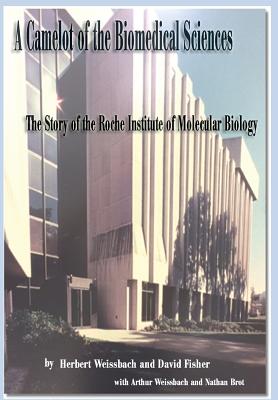A Camelot of the Biomedical Sciences: The Story of the Roche Institute of Molecular Biology

A Camelot of the Biomedical Sciences: The Story of the Roche Institute of Molecular Biology
The Story of the Roche Institute of Molecular Biology The history of science began with wonder. Its foundation was endless curiosity about the world and people brave enough to ask, what if? How? And why? It began in rudimentary laboratories set up by wealthy men in basements and emptied rooms. The British Royal Academy gave it a formal experimental structure. And for almost two centuries it was the exclusive domain of those wealthy and educated people able to find the time and resources to conduct their experiments. To satisfy their own curiosity. The experimental laboratory is a relatively new invention, established mostly in universities before 1900. But laboratory science began growing with the realization that discoveries made in the lab could become valuable products. Edison proved those things discovered in laboratories had substantial commercial value. In the biomedical field two distinct industries came into creation: the prestigious laboratories and Universities where research was done to expand knowledge and commercial laboratories where it was done for profit. For decades, as the world's pharmaceutical industry developed and prospered in the United States, they remained separate and distinct. And then, in 1967, one of theworld's pharmaceutical corporations, Hoffmann- La Roche changed that world, it created and funded a laboratory for pure scientific research. There had never before been anything like it in the pharmaceutical industry. And this is the extraordinary story of the Roche Institute of Molecular Biology, told in the words of the people who created it. With its substantial profits, especially from the psychopharm- acologic drugs librium and valium, staid Hoffmann-La Roche decided to make a ubstantial investment in the future: It would establish a place where many of the best scientists in the world could work on projects of their own creation -- with guaranteed funding and no requirements to produce results - much less a product. It was a scientific Camelot. Roche began by recruiting several of the most respected scientists at the prestigious National Institutes of Health. The first two men to risk their careers by joining the as-yet nonexistent Roche Institute, Sidney Udenfriend and Herbert Weissbach, with the support of senior management at Hoffmann-La Roche, would build a dream into a world renowned scientific research center. By the time the Roche Institute closed its doors, a victim of the b
PRP: 231.05 Lei
Acesta este Prețul Recomandat de Producător. Prețul de vânzare al produsului este afișat mai jos.
207.94Lei
207.94Lei
231.05 LeiLivrare in 2-4 saptamani
Descrierea produsului
The Story of the Roche Institute of Molecular Biology The history of science began with wonder. Its foundation was endless curiosity about the world and people brave enough to ask, what if? How? And why? It began in rudimentary laboratories set up by wealthy men in basements and emptied rooms. The British Royal Academy gave it a formal experimental structure. And for almost two centuries it was the exclusive domain of those wealthy and educated people able to find the time and resources to conduct their experiments. To satisfy their own curiosity. The experimental laboratory is a relatively new invention, established mostly in universities before 1900. But laboratory science began growing with the realization that discoveries made in the lab could become valuable products. Edison proved those things discovered in laboratories had substantial commercial value. In the biomedical field two distinct industries came into creation: the prestigious laboratories and Universities where research was done to expand knowledge and commercial laboratories where it was done for profit. For decades, as the world's pharmaceutical industry developed and prospered in the United States, they remained separate and distinct. And then, in 1967, one of theworld's pharmaceutical corporations, Hoffmann- La Roche changed that world, it created and funded a laboratory for pure scientific research. There had never before been anything like it in the pharmaceutical industry. And this is the extraordinary story of the Roche Institute of Molecular Biology, told in the words of the people who created it. With its substantial profits, especially from the psychopharm- acologic drugs librium and valium, staid Hoffmann-La Roche decided to make a ubstantial investment in the future: It would establish a place where many of the best scientists in the world could work on projects of their own creation -- with guaranteed funding and no requirements to produce results - much less a product. It was a scientific Camelot. Roche began by recruiting several of the most respected scientists at the prestigious National Institutes of Health. The first two men to risk their careers by joining the as-yet nonexistent Roche Institute, Sidney Udenfriend and Herbert Weissbach, with the support of senior management at Hoffmann-La Roche, would build a dream into a world renowned scientific research center. By the time the Roche Institute closed its doors, a victim of the b
Detaliile produsului










